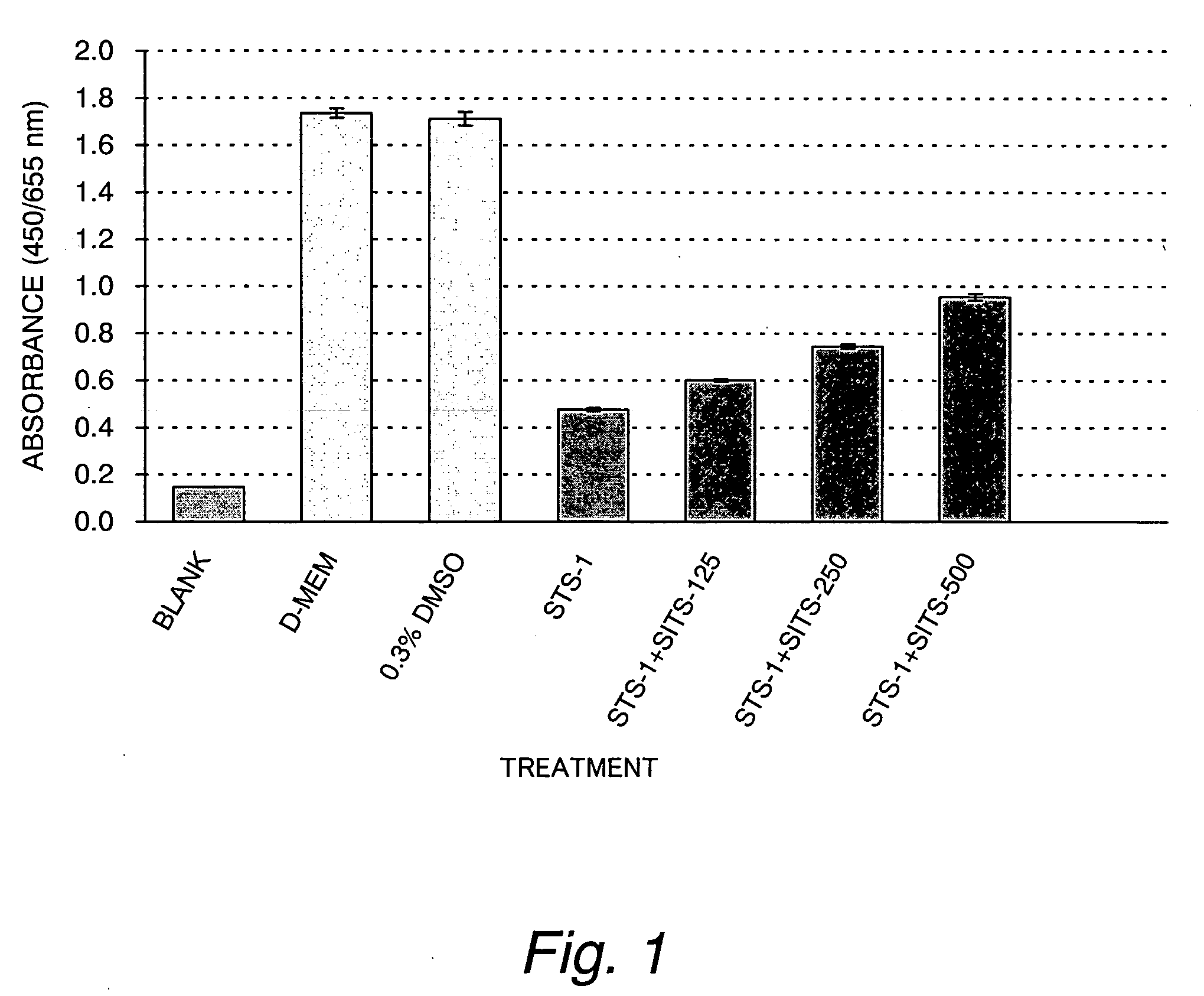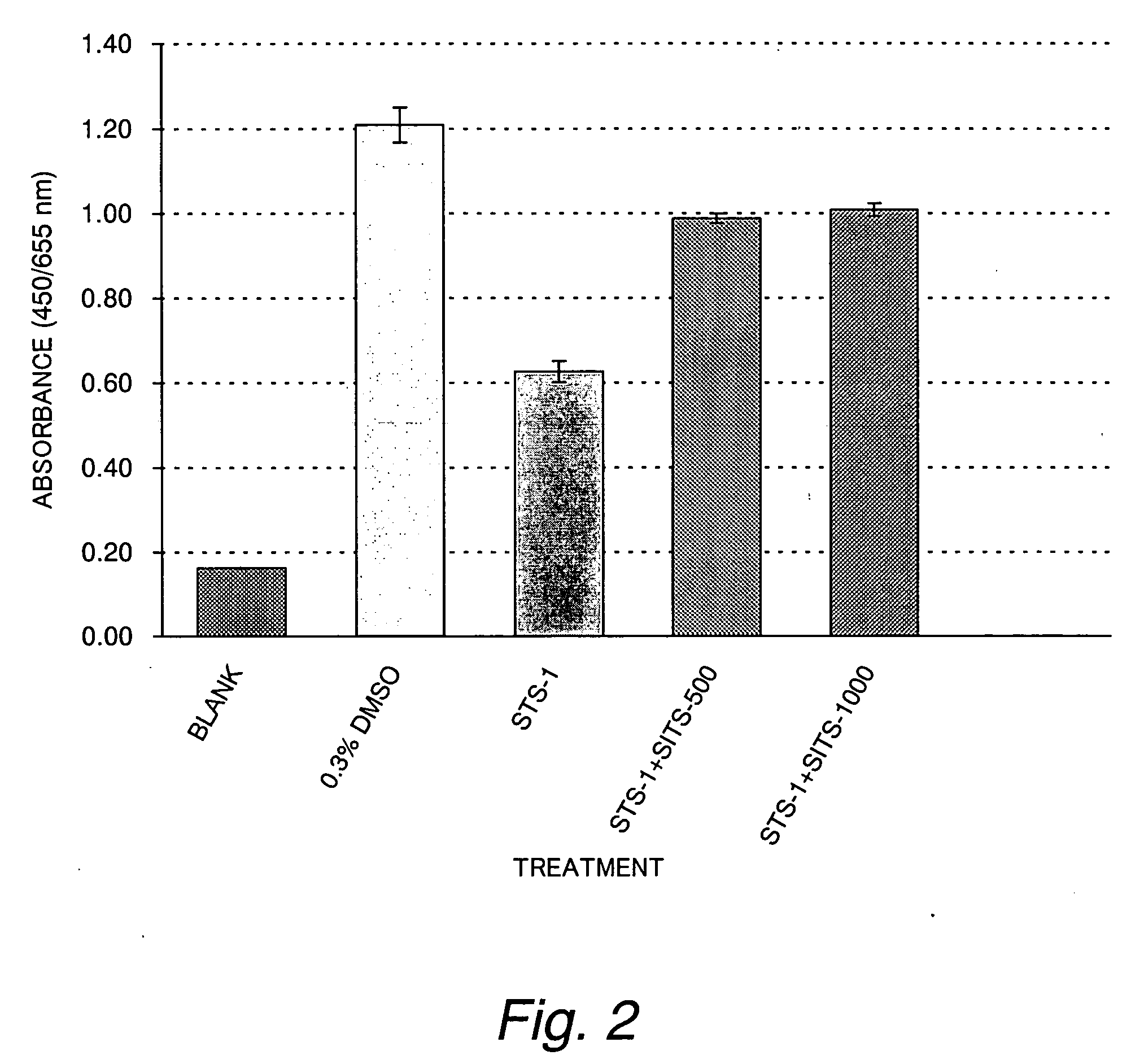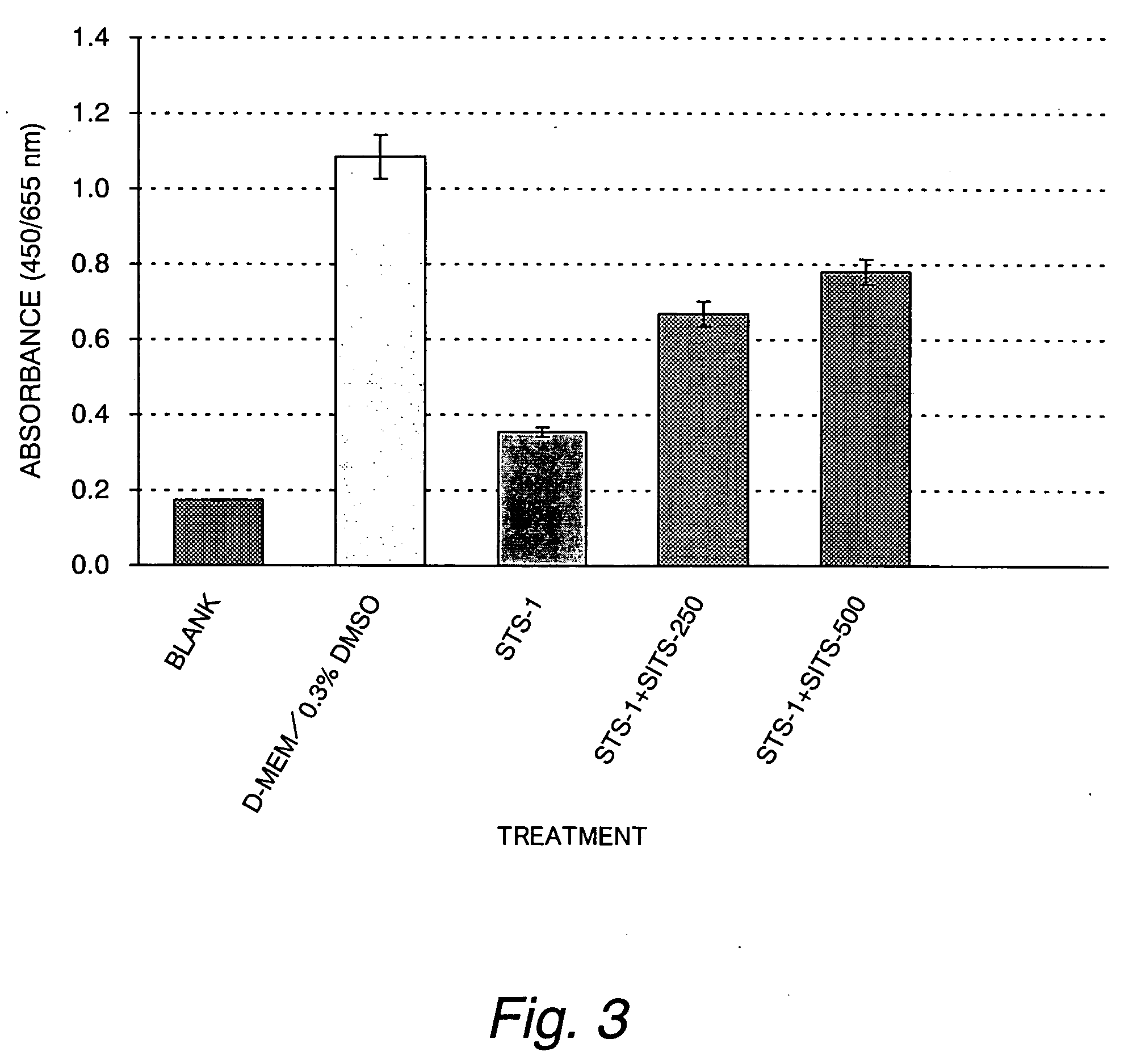Remedies for heart diseases
a heart disease and drug technology, applied in the field of therapeutic or prophylactic agents of cardiac diseases, can solve the problems of serious conditions of symptomatic cardiac disease, ischemic myocardial dysfunction, and little known about the mechanism behind apoptosis in myocardial cells, and achieve the effects of reducing cell volume, and suppressing apoptosis cell death
- Summary
- Abstract
- Description
- Claims
- Application Information
AI Technical Summary
Benefits of technology
Problems solved by technology
Method used
Image
Examples
example 1
[0082] The protective effect of SITS (4-acetamido-4′-isothiocyanostilbene) on staurosporine-induced cytotoxicity in cultured myocardial cells
[0083] Primary cultures of myocardial cells from SD rats at day 20 of pregnancy were used after being cultivated in D-MEM supplemented with 10% of fetal bovine serum. The myocardial cells were cultured on 24-well multiwell plates in an amount of 0.5 mL per well so as to give a density of 5×105 cells / mL.
[0084] A control group consisted of three culture media, a cell-free medium (blank), a cell-containing medium alone (D-MEM) and 0.3% DMSO. A test group consisted of two drug-containing culture media, i.e., a solution of 1 μM staurosporine dissolved in 0.3% DMSO (STS-1) and a mixed solution of the 1 μM staurosporine and 125, 250 or 500 μM SITS (STS-1+SITS-125, STS-1+SITS-250, or STS-1+SITS-500). The two groups were cultured in 5% CO2 at 37° C. for 2 hours. Cultivation was continued for another day in D-MEM supplemented with 10% FBS and cell viab...
example 2
[0088] The Protective Effect of SITS on Staurosporine-induced Cytotoxicity in Cultured Myocardial Cells
[0089] In this Example, tests were conducted as in Example 1 except that the test group consisted of a 1 μM staurosporine solution (STS-1) and a mixed solution of the 1 μM staurosporine solution and 250 or 500 μM SITS (STS-1+SITS-250 or STS-1+SITS-500) and that the control and test groups were cultured on 96-well multiwell plates rather than the 24-well multiwell plates. The result is shown in FIG. 3.
[0090] As it turned out, it was elucidated that SITS suppresses the drop in cell viability in a dose-dependent manner even when the 96-well multiwell plates were substituted for the 24-well multiwell plates. This shows the possibility of performing high throughput screening of candidate compounds by employing the conditions of Example 2.
example 3
[0091] The protective effect of DIDS (4,4′-diisothiocyanostilbene-2,2′-disulfonic acid) from staurosporine-induced cytotoxicity in cultured myocardial cells
[0092] In this Example, tests were conducted as in Example 1 except that the test group consisted of a 1 μM staurosporine solution (STS-1) and a mixed solution of the 1 μM staurosporine and 62.5, 125 or 250 μM DIDS (STS-1+DIDS-62.5, STS-1+DIDS-125 or STS-1+DIDS-250). The result is shown in FIG. 4.
[0093] As it turned out, it was elucidated that DIDS instead of SITS also suppresses the drop in cell viability in a dose-dependent manner.
PUM
| Property | Measurement | Unit |
|---|---|---|
| pH | aaaaa | aaaaa |
| volumes | aaaaa | aaaaa |
| volume | aaaaa | aaaaa |
Abstract
Description
Claims
Application Information
 Login to View More
Login to View More - R&D
- Intellectual Property
- Life Sciences
- Materials
- Tech Scout
- Unparalleled Data Quality
- Higher Quality Content
- 60% Fewer Hallucinations
Browse by: Latest US Patents, China's latest patents, Technical Efficacy Thesaurus, Application Domain, Technology Topic, Popular Technical Reports.
© 2025 PatSnap. All rights reserved.Legal|Privacy policy|Modern Slavery Act Transparency Statement|Sitemap|About US| Contact US: help@patsnap.com



